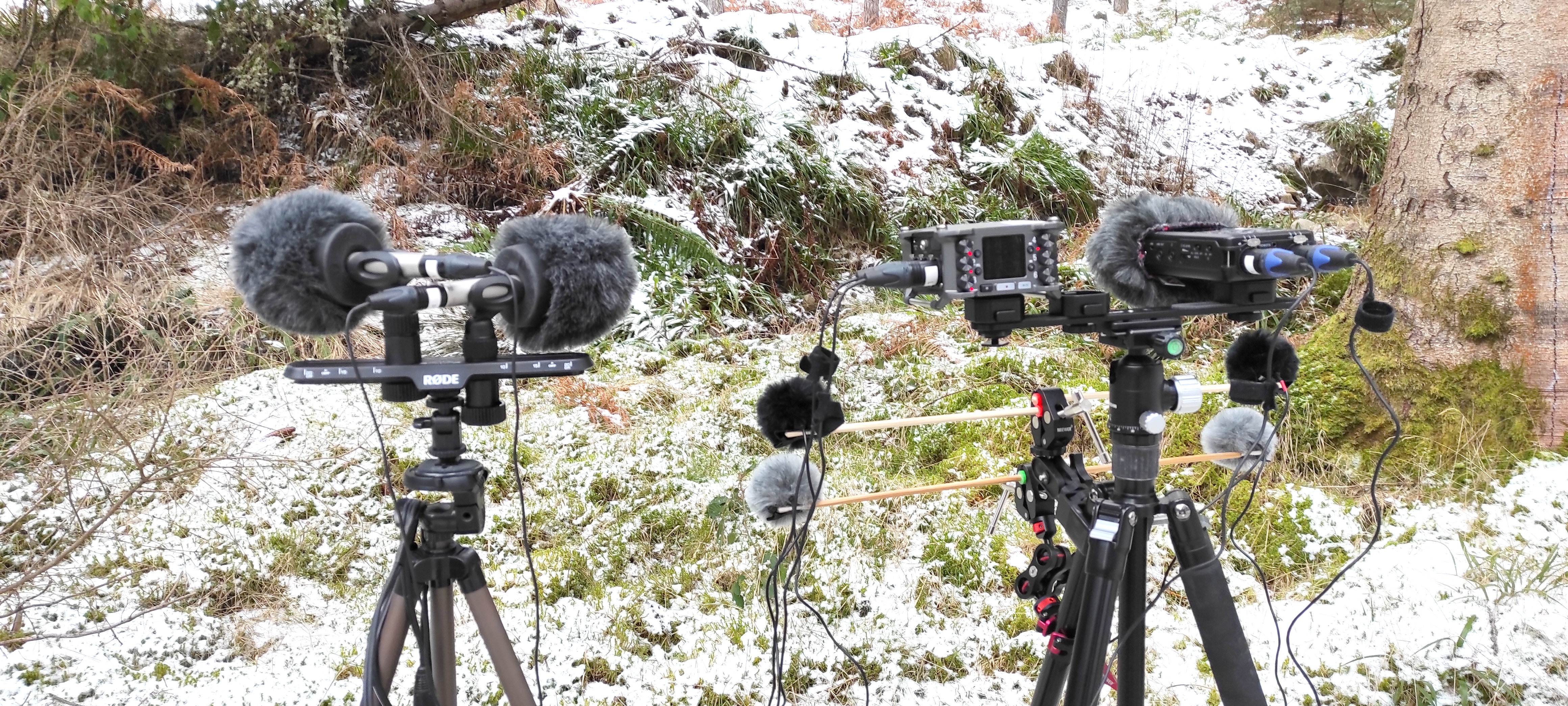Unbalanced inputs are sometimes seen as offering lower quality than balanced (XLR) inputs; but how true is that? Let's try a handful of recorders which have both types of input, to see how they compare.

Testing balanced vs. unbalanced mics is tricky. The mics may be different; even if they have the same capsules, the internal electronics may be different. And a given recorder will have different input electronics for its unbalanced and balanced inputs. So it's hard to know what you're getting from a comparison.
Still, it may be useful to get an idea of what the tradeoffs are, so here's an attempt, using two different recorders. The mics are all Micbooster Clippy EM172 mics; one pair having balanced XLR connections, and the other pair unbalanced 3.5mm. They mics were in near-identical AB setups, as you can see in the picture. They were tested against each other recording into both the DR-100 and the DR-701.
Once again, each recording was boosted in post to -24LUFS. The recorders, mics, and the amount of boost applied are shown here:
| Recorder | Mic | Boost |
|---|---|---|
| DR-100 | Micbooster 3.5mm Clippy EM172 | +13.83 dB |
| DR-100 | Micbooster XLR Clippy EM172 | +8.79 dB |
| DR-701 | Micbooster 3.5mm Clippy EM172 | +29.54 dB |
| DR-701 | Micbooster XLR Clippy EM172 | +12.72 dB |
Here are 1-minute excerpts from the recordings.
Tascam DR-100 MKIII Unbalanced |
|
| The Tascam DR-100 MKIII, recording two Micbooster 3.5mm Clippy EM172s in an AB pair. |
|
Tascam DR-100 MKIII Balanced |
|
| The Tascam DR-100 MKIII, recording two Micbooster XLR Clippy EM172s in an AB pair. |
|
Tascam DR-701 Unbalanced |
|
| The Tascam DR-701, recording two Micbooster 3.5mm Clippy EM172s in an AB pair. |
|
Tascam DR-701 Balanced |
|
| The Tascam DR-701, recording two Micbooster XLR Clippy EM172s in an AB pair. |
|